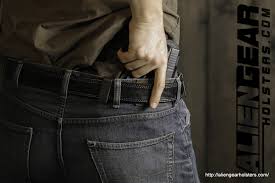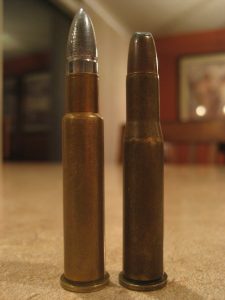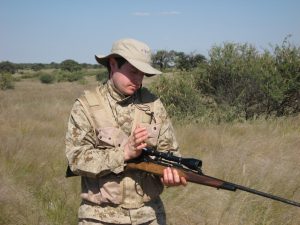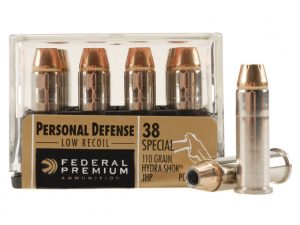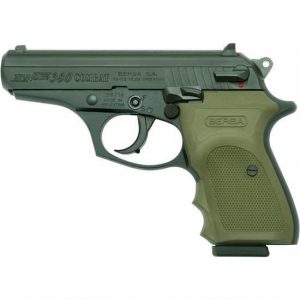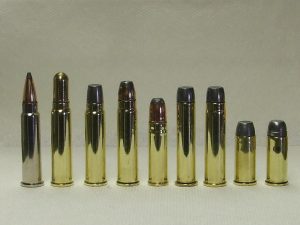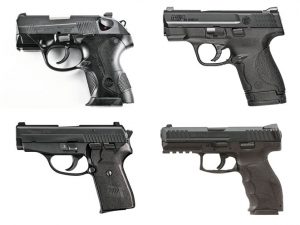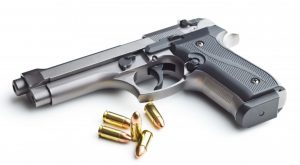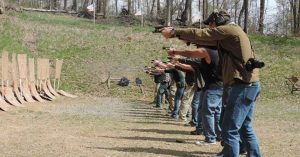
Firearms enthusiasts have one thing in mind when they see a .44 Magnum – Dirty Harry snarling, “Make My Day.” The iconic 1970s movie boosted sales of the gun and kept it soaring ever since. Clint Eastwood cherished his S&W Model 29 and called the .44 Magnum “the most powerful gun in the world.” The statement wasn’t exactly true, but Dirty Harry was cool, and no one seemed to care. The .44 Magnum has been surpassed by more powerful cartridges, but the legend keeps the gun in the public eye. Surprisingly, law enforcement never embraced the .44 Mag as one might expect.
The .44 Magnum is most often sought as a self-defense weapon. The round will do the job, but it may be more than what the shooter bargained for when firing the monster revolver. The recoil is heavy, and the muzzle flash is equally strong. It is especially daunting to novice shooters and those of a smaller stature. Hunters also flock to the .44 Mag for medium to large game although there may be better choices for bear and big game.
History of the .44 Magnum
The .44 Magnum was designed by Elmer Keith, the legendary sportsman, writer and firearms enthusiast. Keith is well known for developing the .357 Magnum. Keith began to design the round by lengthening a .44 Special cartridge and altering the bullet weights and grains of powder. The final product was designed in 1950, and available on the commercial market in 1955.
The .44 Magnum is a large bore cartridge that was first introduced in 1956. An accurate, deeply penetrating round, the .44 Mag was originally designed by Elmer Keith, an Idaho rancher, writer, and firearms enthusiast. Keith had previously developed the .357 Mag cartridge and solidified his reputation in the firearms community. Keith set out to create a multi-functional cartridge and convinced Smith & Wesson and Remington Arms Co. to manufacture it for the Smith and Wesson Model 29. Although Remington manufactured the first. 44 Magnum at Keith’s request, S&W is credited with introducing the .44 Mag to the public. Not many people seem to remember that Ruger beat S&W to market by a few months with a .44 Mag version of its single action Blackhawk revolver.
Development
Keith had intended for the .44 to be used for hunting, self-defense, and target shooting. The cartridge is strong and packs a big punch. The .44 is extremely precise, giving the shooter as much as a 90% accuracy rate. However, the high-pressure causes it to carry a heavy recoil and muzzle flash, making it less than ideal for novice shooters or people of smaller stature. Those that find the .44 Mag a bit too intense may opt for the .44 Special, a slightly smaller cartridge with less recoil. Shooters should experiment using both rounds to find which is best suited to their style and experience. Note that .44 Special cartridges can be fired from guns chambered for a .44 Magnum, but the reverse is not true.
While the .44 Magnum seems to be the perfect bullet for self-defense experts often rebut the choice due to its deep penetration. They claim that the cartridge is too powerful for in-home defense and may cause collateral damage.
It’s important to keep in mind that not all .44 Mag ammo is the same. Some brands and grades are appropriate for self-defense while other, less powerful, grades are more appropriate for target and sports shooting.
Superior Ammo
The .44 Magnum has excellent good accuracy. If you load it with a heavy, non-expanding bullet, this cartridge can easily shoot through hard targets without trouble. The limiting factor of its cartridge is not terminal ballistics, but rather the trajectory of the bullet. It is going to work better if you limit your range to 100 yards or less when shooting. The casing of this ammo is slightly longer compared to other cartridges to prevent the far higher pressure cartridge from being chambered in when you are shooting, and in turn preventing possible deaths and injuries.
Compatibility
Guns deliver ammo in different ways, so it’s important to find ammo that is compatible with your gun. Shooters use different guns for different targets, so it’s likely that the ammo will change as well. Experts show newcomers the importance of finding ammo that their guns like, so they perform as expected without misfires or jams.
Reliability
Shooters rely on their guns and ammo to perform every time, so reliability is a crucial part of choosing the right ammo. Shooters dealing with misfires and other issues get distracted and could possibly lose the match. Besides, using an unreliable tool is an annoyance.
Consistency
Consistency goes hand in hand with reliability. Target shooters need a round that will perform correctly, not only the first time, but every time. The ammo must fire properly and maintain accuracy throughout each shot and each round if the shooter has any hope of winning. Smart shooters pay attention to grain as a way of gauging a consistent and accurate round.
Accuracy
A gun determines its accuracy. This means that a gun with a heavy recoil tends to be less accurate than a lighter gun since it can throw off your aim. Plinking and target shooting are about hitting the target, not taking down an assailant. Ensure that you can handle the .44 to hit your target.
Cost
Target shooting requires many hours of practice. Therefore, shooters use a massive amount of ammo. Buying ammo in bulk is the best way to reduce cost. Target shooters using large calibers buy in bulk to save a lot of money.
Best .44 Magnum Ammo for Target Shooting
Black Hills 240 Grain
Black Hills is known for producing reliable, high quality products. This new production round is Boxer primed with reloadable brass casings. It delivers a Muzzle Velocity of 1260 fps.
Buffalo Bore Anti-Personnel 180 Grain Lead Hollow Point
This round is touted as one of the best for self-defense. It is a no-nonsense ammunition designed for self-defense and eliminating two-legged targets. It has a Muzzle Velocity of 1500 fps and a Muzzle Energy of 899 ft-lbs.
Buffalo Bore 240 Grain Deer Grenade +P
Deer Grenade +P Ammo was designed specifically to do maximum damage to medium sized game and does not penetrate like a hard cast bullet. It offers about 30% penetration as a typical flat-nosed bullet, perfect for target shooting or taking down shallow game like whitetail deer. Deer Grenade has a Muzzle Velocity of 1550 fps. Great choice for the Redhawk or Super Blackhawk.
Cor-Bon Barns DPX 225 Grain
Cor-Bons Barns DPX uses a solid copper hollow point bullet. It has a lighter recoil and faster recovery than most heavy weight rounds. It offers deep penetration while maintaining soft tissue integrity. DPX has a Muzzle Velocity of 1350 fps.
Federal Ammunition American Eagle 240 Grain Fusion
This medium-priced American-made Fusion bullet with brass casing delivers 887 ft-lbs Muzzle Energy.
Fiocchi Ammunition: 240 Grain JSP
Coming in at the same price as the Remington, this foreign made, jacketed soft point, 240 grain self-defense round offers 1838 FPS velocity.
HornadyXTP is highly recommended by seasoned shooters. The American-made cartridge makes the list for the best .44 hunting ammo. It’s slightly more expensive than the Remington, but also more powerful. It boasts a higher velocity of 1500 fps.
PMC Bronze .44 Remington Magnum Ammunition JHP 180 Grains
Poongsan Corporation makes “PMC” (precision-made cartridges) ammunition for competition shooting and hunting. The company has a solid reputation for high quality and currently exports more than 100 different types of ammunition. This jacketed hollos point has a high velocity of 1,750 fps.
Remington Ammunition: 240 Grain HTP Rounds
Top of the list of the best .44 ammo for self-defense. Available in 240 grain SP and SJHP rounds, this American-made defense load is inexpensive, but powerful. It boasts 1180 FPS Muzzle Velocity and 742 ft-lbs Muzzle Energy.
Partition Gold offers a low velocity resisting weight loss upon impact. The bullet’s rear lead core is locked in place for extra bullet integrity. It offers a Muzzle Velocity of 1250 fps.
Conclusion
Plinkers and target shooters may not always agree on using .44 magnum ammo. The .44 Magnum is a powerful gun that is not well suited to concealed carry. It is an excellent choice for self-defense although some claim that the .357 Magnum is easier to carry and aim. Choose what round suits you best, practice, and make the end decision for yourself.

